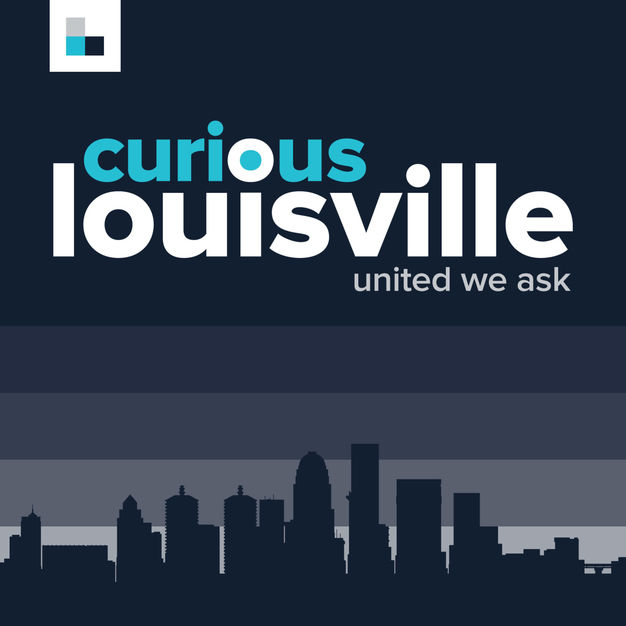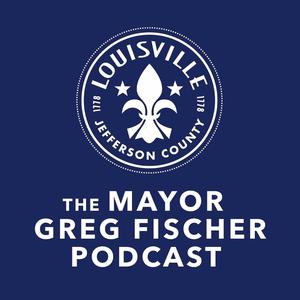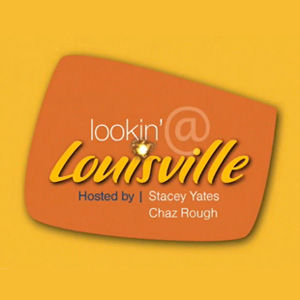
Curious Louisville
Louisville Public Media
Ever had a question about the Derby City that you just can't answer? That's where Curious Louisville comes in. Listeners submit their questions, the public votes on which questions to investigate, and 89.3 WFPL finds the answers.
- 3 minutes 42 secondsWhat's That Door In A Hill On Lexington Road?You may have seen it while driving down Lexington road, away from downtown, just before Headliners Music Hall. A retaining wall in the side of the hill... with a door in the middle. What's behind it? It's a question we get a lot at Curious Louisville. On this episode, Ashlie Stevens takes us behind the door.
More Info31 January 2020, 5:15 pm - 5 minutes 55 secondsCurious Louisville: Do White Outer Lines Make Roads Safer?For fourteen years, Robert Miles has seen cars in ditches, in neighbor’s yards and in his own fencing that borders the boundary of the horse farm his family owns. He lives off Todds Point Road in Shelby County. “It’s horrific, you’re taking your life in your hands every time you go through,” Miles said of a particular curve in the road. Todds Point is an idyllic rural road going through horse country. But it’s narrow, and doesn’t have white outer edge lines that could help drivers stay on the road. Miles asked Curious Louisville: “Why do some roads have white outer lines and others don’t? What determines who gets what paint?” WFPL reporter Lisa Gillespie went looking for the answer.27 November 2019, 3:53 pm
- 5 minutes 45 secondsWhy Is A Stretch Of Louisville Highway Measured In Kilometers?
The United States prides itself on a kind of rugged individualism. We like to think we do things our own way here.
So while the rest of the world uses the metric system, here in America, we use a system based on inches, feet, yards and miles.
Except on a particular stretch of Louisville highway. Lots of you asked us why. On this episode, WFPL's Ashlie Stevens finds out.
Curious Louisville wouldn't be possible without you! Click here to support the work we do:
http://donate.curiouslouisville.org +14 June 2019, 3:00 pm - 5 minutes 15 secondsWhy Does The U of L Cardinal Mascot Have Teeth?
Woody Woodpecker. Donald Duck. Iago from “Aladdin." Louie, the U of L cardinal. All these birds have something in common: at various points in their histories, they have been depicted with a full toothy grin.
Which leads to our latest Curious Louisville question from Rachel Peterson: “Why does the U of L cardinal mascot have teeth?”
“Birds don’t have teeth,” Rachel said. “I get that it’s trying to look fierce, but it’s just biologically inaccurate."
WFPL’s Liz Schlemmer and Ashlie Stevens looked for an answer.17 May 2019, 8:02 pm - 7 minutes 7 secondsCurious Louisville: Why Is There An Omar Khayyam Blvd In Valley Station?
Nadeem Saddiqui and his family recently moved to Valley Station, in the southeastern part of Louisville. "It's stereotypically not the most multi-cultural area of Louisville," he said. So it surprised him to see a street named Omar Khayyam Blvd. "It was a medieval Persian poet," he said. "Growing up my parents had a lot of books of his poetry."
Nadeem wanted to know how this street came to be, in this neighborhood. So we went looking for the answer.
26 April 2019, 5:46 pm - 5 minutes 9 secondsCurious Louisville: Who Were The Caldwell Sisters?
Support Curious Louisville:
Curious Louisville is all about you. You send us your questions, and we take you along with us on a search for the answer. It's people-powered. In fact, our whole organization here is people-powered -- it's because of your support that we can do the work we do. Join us with a pledge today, and we pledge in return to keep letting your curiosity be our guide! Click here to give. Thank you!History is full of untold stories, and today on Curious Louisville, we're telling one. It's about two sisters who had a lasting impact on Louisville, and whose graves are here, even though they never lived in the city: Mary Elizabeth and Mary Gwendolyn Caldwell.
Listener Chuck Rogalinski wrote us: “Will you tell the story of the two sisters who weren’t born in Louisville, owned property in the city, married into European aristocracy and are buried in Cave Hill?”
In today's edition of Curious Louisville, we do just that.
4 April 2019, 8:52 pm - 4 minutes 57 secondsCurious Louisville: Who Cleans Up Graffiti On The Backs Of Freeway Signs?
Is it art? Is it crime? A little bit of both? Whatever it is, it's part of your morning commute.
"Every morning when I commute to work, no matter which way I go, I started to see more and more graffiti on the back of the signs," Joe Sullivan reported. "I saw it and I thought, I hope they take that down, because if they don't take it away, it's just going to embolden people to do more. And it seems to have."
Joe says he sees the artistic talent on display in some graffiti. But he also thinks it's distracting to drivers, and a bad look for the city. "It sort of gives the impression that we're not taking care of things."
So Joe asked Curious Louisville, who's cleaning that up? WFPL's Ryan Van Velzer took up the mantle. And the answer takes us on a commute of our own, through both sides of the art/vandalism debate.
21 March 2019, 9:56 pm - 5 minutes 39 secondsCurious Louisville: Why Are There So Many Fish Fries In Louisville?
Every year at the beginning of Lent, (the period in the Christian calendar between Ash Wednesday and Easter) WFPL publishes a guide to all the fish fries in Louisville. It's always one of our most popular stories of the year.
There are Facebook groups dedicated solely to rating the different fish fries around town. And hundreds upon hundreds of people line up in our city's churches every Friday night to eat fried fish, hush puppies, and macaroni and cheese.
This made US curious: Why exactly are there so many Catholic fish fries in the city? And what (aside from the delicious food) makes them so popular? WFPL's Ashlie Stevens investigates, in this edition of Curious Louisville.
7 March 2019, 11:37 pm - 3 minutes 17 secondsCurious Louisville: What Was Old Louisville Called Before It Was 'Old?'
Louisville is a city of neighborhoods. For a lot of people, where they live is a big part of their identity.
And Curious Louisville listener Evan Patrick wondered about how one neighborhood developed an identity of its own.
WFPL’s Ashlie Stevens looked into the answer.
5 March 2019, 6:14 pm - 6 minutes 21 secondsCurious Louisville: What Happened To Muhammad Ali's Olympic Medal?
In the 1960 Summer Olympics in Rome, a young Muhammad Ali -- then called Cassius Clay -- defeated three-time European boxing champion Zbigniew Pietrzykowski.
He returned to Louisville with a gold medal, which he wore around his neck for days afterwards; some biographers say he even slept with it around his neck.
But then, the medal disappeared, and its fate has long been the topic of sports media speculation (despite the fact that he received a replacement medal in 1996).
One prevailing theory is that Ali had been turned away from a restaurant because he was black, so he tossed his medal off the Second Street Bridge into the Ohio River. But in interviews, Ali never gave a definitive answer regarding the medal’s location.
An Ali fan named Ray Watkins asked Curious Louisville to help him find out, once and for all. WFPL's Kyeland Jackson took on the challenge.
You can ask your own Curious Louisville question at curiouslouisville.org.
28 February 2019, 10:33 pm - 5 minutes 43 secondsCurious Louisville: Whatever Happened To The Falls Fountain?
It was supposed to be Louisville’s answer to the St. Louis arch. But in the press, it was eventually called ugly. A turkey A good idea gone bad. It’s been gone since 1998, but not entirely forgotten.
In fact, it’s been on Curious Louisville listener Mark Friedland’s mind: Whatever happened to the Falls Fountain?
In this edition of Curious Louisville, we find out the answer.
14 February 2019, 10:33 pm - More Episodes? Get the App
Your feedback is valuable to us. Should you encounter any bugs, glitches, lack of functionality or other problems, please email us on [email protected] or join Moon.FM Telegram Group where you can talk directly to the dev team who are happy to answer any queries.
 KY Politics Distilled
KY Politics Distilled
 Five Things
Five Things
 The Mayor Greg Fischer Podcast
The Mayor Greg Fischer Podcast
 Here Today
Here Today
 Lookin'@Louisville
Lookin'@Louisville